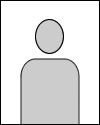Cost-effectiveness of total neoadjuvant therapy with selective nonoperative management for locally advanced rectal cancer: Analysis of data from the organ preservation for rectal adenocarcinoma trial Journal Article
| Authors: | Widmar, M.; McCain, M.; Meza, A. M.; Ternent, C.; Briggs, A.; Garcia-Aguilar, J. |
| Article Title: | Cost-effectiveness of total neoadjuvant therapy with selective nonoperative management for locally advanced rectal cancer: Analysis of data from the organ preservation for rectal adenocarcinoma trial |
| Abstract: | PURPOSE The clinical efficacy of total neoadjuvant therapy (TNT) followed by selective nonoperative management (NOM) for locally advanced rectal cancer (LARC) was examined in the Organ Preservation for Rectal Adenocarcinoma (OPRA) trial. We investigated the cost and quality-of-life implications of adopting this treatment approach. METHODS We analyzed clinical, cost, and quality-of-life outcomes for TNT with selective NOM in comparison with chemoradiotherapy (CRT)-surgery-adjuvant chemotherapy (standard of care [SOC]) using data from OPRA, prospective cohorts, and published studies. Cost-effectiveness was evaluated over varying willingness-to-pay thresholds, and sensitivity analyses evaluated cost-effectiveness for different surgical contexts and SOC variants as well as a 10-year time horizon. RESULTS SOC was dominated by TNT with selective NOM in the base case analysis. TNT in which CRT was followed by consolidation chemotherapy (CNCT) was the least costly at $89,712 in Medicare proportionate US dollars (MP$), followed by TNT in which induction chemotherapy was followed by CRT (INCT) at MP$90,259 and SOC at MP$98,755. INCT was the preferred strategy, with 4.56 quality-adjusted life years, followed by CNCT at 4.42 and SOC at 4.29. TNT with selective NOM dominated SOC in all sensitivity analyses except when SOC omitted adjuvant chemotherapy without an impact on disease-free survival. CNCT was more cost effective than SOC when the proportion of patients entering NOM after TNT was ≥22% or ≥43%, for SOC with and without adjuvant therapy, both well below the rates seen in OPRA. CONCLUSION TNT with selective NOM is cost effective. The cost-effectiveness of CNCT with NOM relative to SOC is dependent on CNCT being made available to a sufficiently large proportion of patients with LARC. Additional analyses are needed to validate these findings from a societal perspective and in the context of other emerging treatment paradigms for LARC. © 2024 by American Society of Clinical Oncology. |
| Keywords: | controlled study; aged; middle aged; united states; chemotherapy, adjuvant; neoadjuvant therapy; adenocarcinoma; quality of life; randomized controlled trial; pathology; economics; conservative treatment; adjuvant chemotherapy; rectal neoplasms; rectum tumor; quality adjusted life year; cost-benefit analysis; therapy; cost benefit analysis; induction chemotherapy; quality-adjusted life years; procedures; consolidation chemotherapy; organ sparing treatments; humans; human; male; female |
| Journal Title: | Journal of Clinical Oncology |
| Volume: | 43 |
| Issue: | 6 |
| ISSN: | 0732-183X |
| Publisher: | American Society of Clinical Oncology |
| Publication status: | Published |
| Date Published: | 2025-02-20 |
| Online Publication Date: | 2024-10-31 |
| Start Page: | 672 |
| End Page: | 681 |
| Language: | English |
| DOI: | 10.1200/jco.24.00681 |
| PUBMED: | 39481074 |
| PROVIDER: | scopus |
| PMCID: | PMC11927003 |
| DOI/URL: | |
| Notes: | Article -- MSK Cancer Center Support Grant (P30 CA008748) acknowledged in PubMed and PDF -- MSK corresponding author is Maria Widmar -- Source: Scopus |
Altmetric
Citation Impact
BMJ Impact Analytics
MSK Authors
-
 357
357Garcia Aguilar -
 80
80Widmar -
 28
28Mishra -
 1
1Mccain
Related MSK Work



